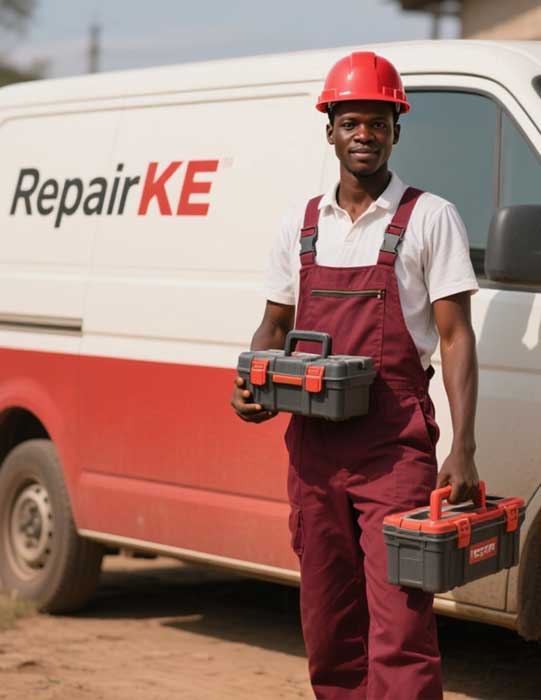
The DSTV Satellite Television Installation Procedure and Process
DSTV (Digital Satellite Television), a leading satellite TV service in Africa, offers a wide range of entertainment, sports, and news channels. Installing a DSTV system requires careful planning, precise equipment setup, and technical know-how to ensure optimal signal reception and viewing quality. This article provides a comprehensive guide to the DSTV satellite television installation procedure and process, outlining the steps, tools, and considerations involved.
Overview of DSTV Installation
DSTV installation involves setting up a satellite dish, connecting it to a decoder, and configuring the system to receive signals from MultiChoice’s satellite network. The process requires aligning the dish to the correct satellite (typically Eutelsat 36B at 36° East for most African regions), ensuring a clear line of sight, and fine-tuning the system for maximum signal strength. Professional installers often handle the task, but with the right tools and knowledge, technically inclined individuals can perform the installation themselves.
Tools and Equipment Needed
Before starting the installation, gather the following tools and equipment:
- DSTV Satellite Dish: A dish compatible with DSTV, typically 60–90 cm in diameter, depending on the region.
- LNB (Low Noise Block Downconverter): The device attached to the dish that receives satellite signals. A single, twin, or smart LNB may be used, depending on the DSTV package.
- DSTV Decoder: The receiver that decodes the satellite signal for display on your TV (e.g., DSTV Explora, HD Decoder, or Zappa).
- Coaxial Cable: High-quality RG6 coaxial cable to connect the LNB to the decoder.
- F-Connectors: For securing the coaxial cable to the LNB and decoder.
- Satellite Finder or Signal Meter: A device to locate and align the dish with the satellite.
- Mounting Bracket and Pole: To securely fix the dish to a wall, roof, or ground pole.
- Tools: Screwdrivers, spanners, a drill, a spirit level, and a compass or smartphone app for direction alignment.
- TV and HDMI/Component Cables: To connect the decoder to the television.
- Weatherproofing Materials: Silicone sealant or self-amalgamating tape to protect outdoor connections from rain and corrosion.
Step-by-Step Installation Process
1. Site Survey and Dish Placement
- Choose the Location: Select a location for the satellite dish with a clear line of sight to the Eutelsat 36B satellite (36° East). Avoid obstructions like trees, buildings, or tall structures that could block the signal.
- Check Signal Path: Use a compass or satellite finder app to confirm the dish’s azimuth (horizontal direction) and elevation (vertical angle) for your location. MultiChoice provides location-specific alignment details on their website or through installers.
- Ensure Stability: The dish must be mounted on a stable surface (e.g., a wall, roof, or pole) to withstand wind and weather conditions.
2. Mounting the Satellite Dish
- Install the Mounting Bracket: Secure the mounting bracket or pole using a drill and appropriate wall plugs or bolts. Use a spirit level to ensure the mount is perfectly vertical, as even slight misalignment can affect signal quality.
- Attach the Dish: Fix the satellite dish to the mount, ensuring all bolts are tightened but allowing enough flexibility to adjust the dish’s position during alignment.
3. Installing the LNB
- Attach the LNB to the Dish Arm: Secure the LNB to the dish’s arm, ensuring it faces the dish’s focal point. For a smart LNB, follow the manufacturer’s instructions for correct orientation.
- Connect the Coaxial Cable: Attach one end of the coaxial cable to the LNB using an F-connector. Ensure the connection is tight and weatherproofed with silicone sealant or self-amalgamating tape.
4. Aligning the Satellite Dish
- Set Initial Alignment: Adjust the dish to the approximate azimuth and elevation for your location using a compass and the dish’s elevation scale.
- Use a Satellite Finder: Connect the satellite finder between the LNB and the decoder. Power on the decoder to activate the LNB, then slowly adjust the dish’s position while monitoring the signal strength and quality on the satellite finder.
- Fine-Tune for Optimal Signal: Once a signal is detected, make small adjustments to maximize signal strength (aim for at least 80% strength and quality). Tighten all bolts to lock the dish in place.
5. Connecting the decoder
- Run the Coaxial Cable: Route the coaxial cable from the LNB to the decoder’s location, avoiding sharp bends or interference from electrical cables.
- Connect to the Decoder: Attach the coaxial cable to the decoder’s RF input using an F-connector.
- Connect to the TV: Use an HDMI or component cable to connect the decoder to the television. Power on both devices and select the correct input source on the TV.
6. Configuring the Decoder
- Power On the Decoder: Follow the on-screen prompts to set up the decoder. This may include selecting your language, country, and satellite settings.
- Scan for Channels: Navigate to the decoder’s installation menu and perform a satellite scan to lock onto the DSTV signal. The decoder should display signal strength and quality metrics to confirm successful alignment.
- Activate the Subscription: If the decoder is new, contact MultiChoice or use their online portal to activate your DSTV subscription. You may need your smartcard number and account details.
7. Testing and Troubleshooting
- Check Picture Quality: Tune to a few channels to ensure clear audio and video. If the picture is pixelated or the signal drops, recheck the dish alignment and cable connections.
- Inspect Connections: Ensure all F-connectors are secure and weatherproofed. Loose connections can cause signal loss.
- Verify Signal Strength: Use the decoder’s signal meter to confirm consistent signal quality (above 80% is ideal).
Important Considerations
- Safety First: When installing the dish on a roof or elevated surface, use proper safety equipment to prevent falls. Avoid working near power lines.
- Weather Conditions: Install during clear weather, as rain or heavy clouds can interfere with signal detection.
- Professional Assistance: If you’re unsure about any step, hire a MultiChoice-accredited installer to ensure a reliable setup.
- Smart LNB Compatibility: Some DSTV packages (e.g., Explora or multi-room setups) require a smart LNB. Verify compatibility with your decoder before installation.
- Regular Maintenance: Periodically check the dish for misalignment, rust, or cable degradation, especially after storms or heavy winds.
Installing a DSTV satellite television system is a rewarding process that brings a world of entertainment to your home. By carefully selecting the dish location, aligning it with the satellite, and properly configuring the decoder, you can achieve a high-quality viewing experience. Whether you’re a DIY enthusiast or prefer professional assistance, following these steps ensures a successful installation. For additional support, MultiChoice’s customer service and online resources are available to guide you through the process.
Enjoy your DSTV experience with crystal-clear channels and endless entertainment!




